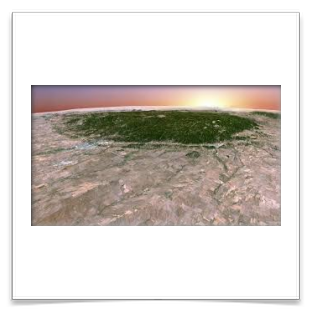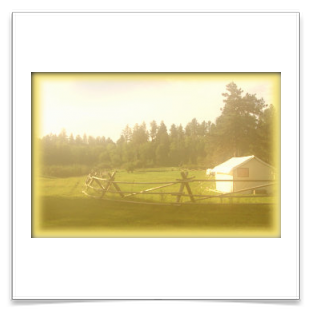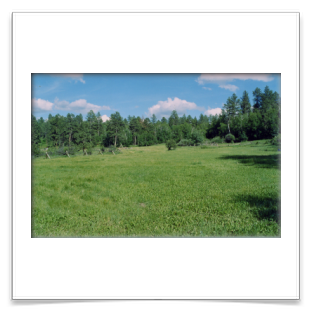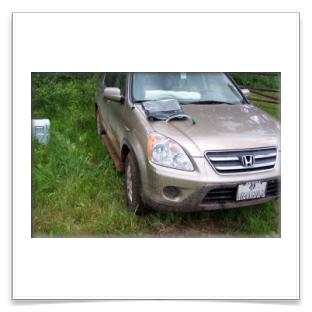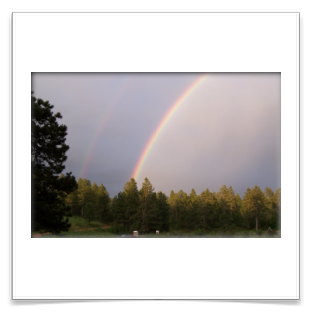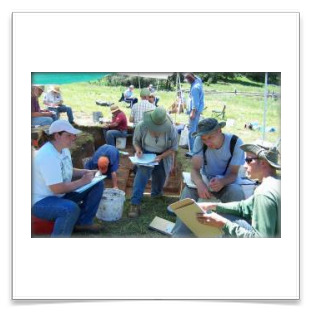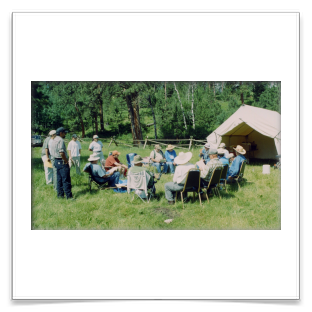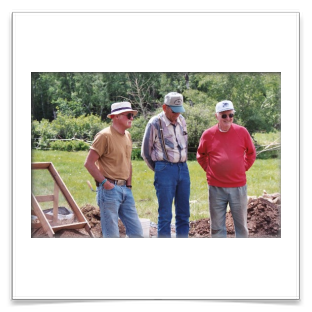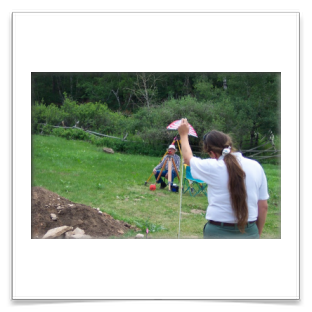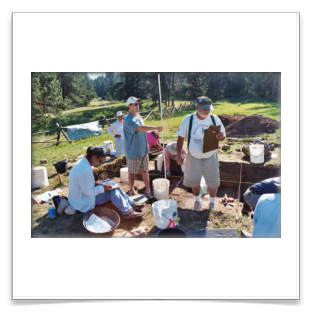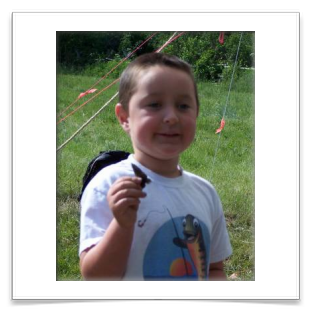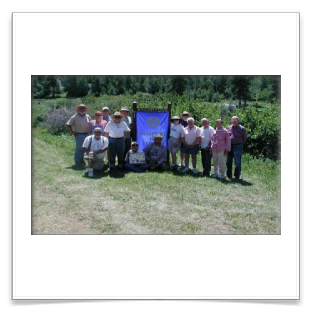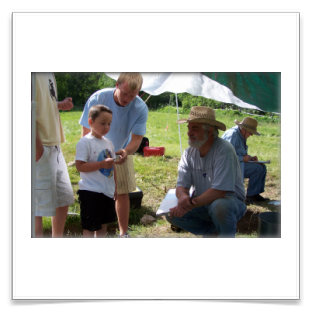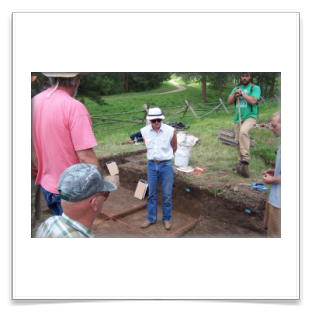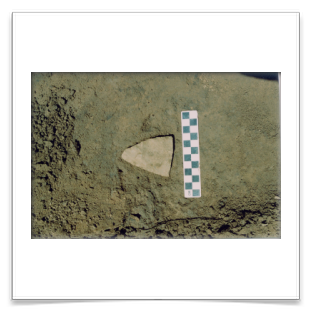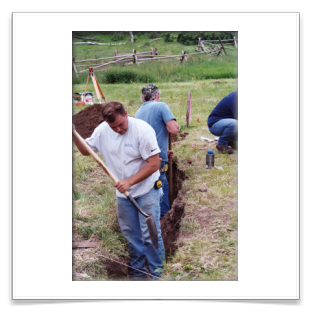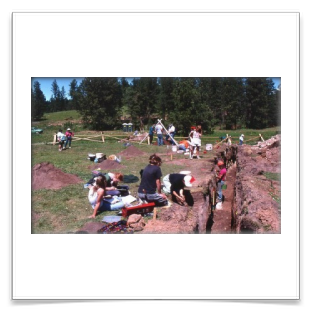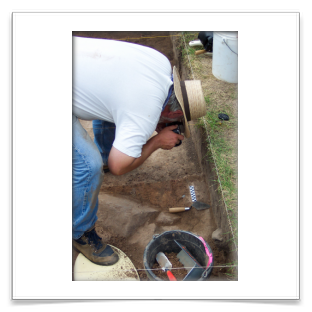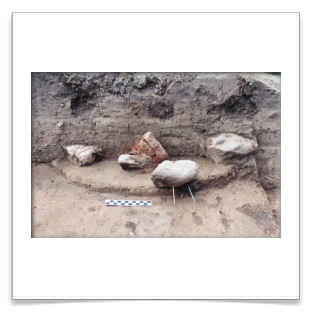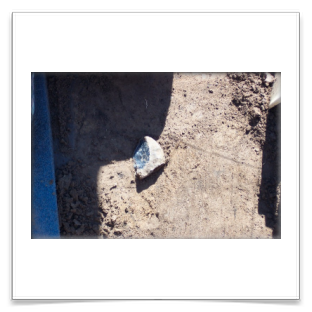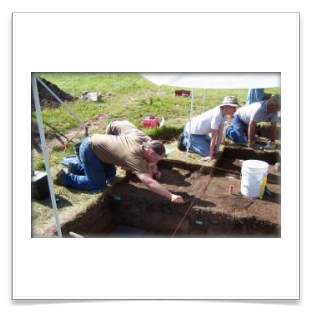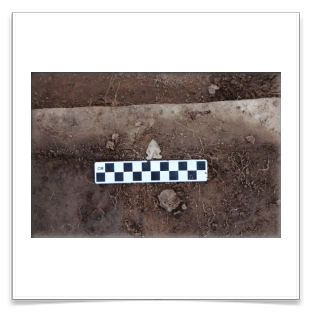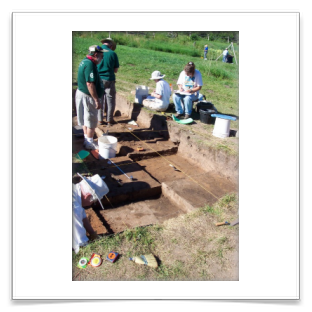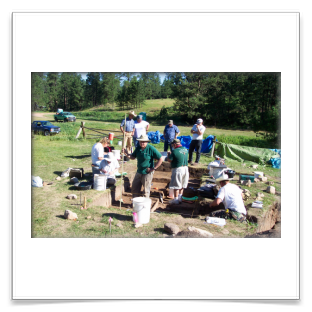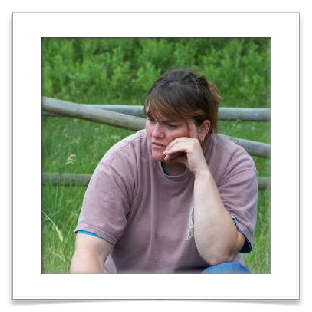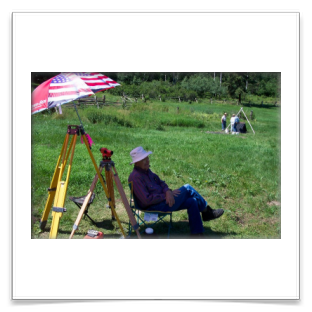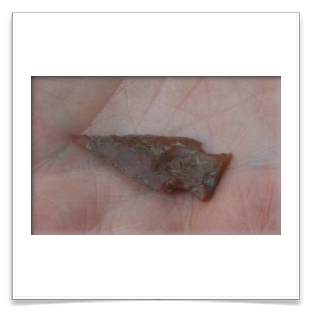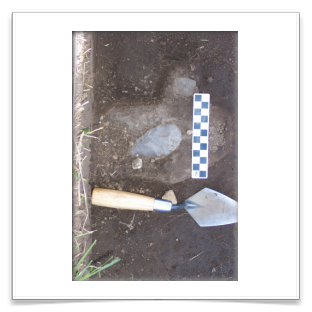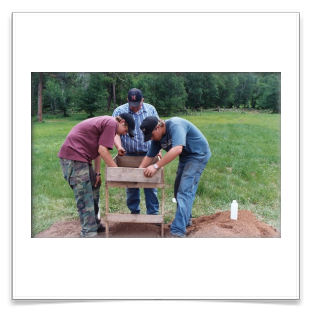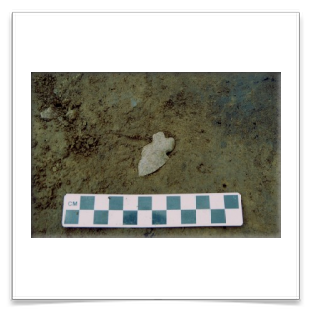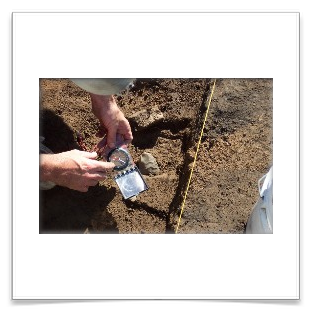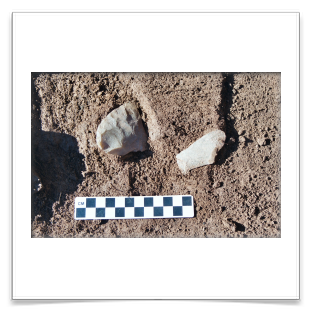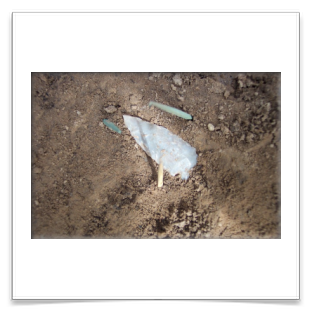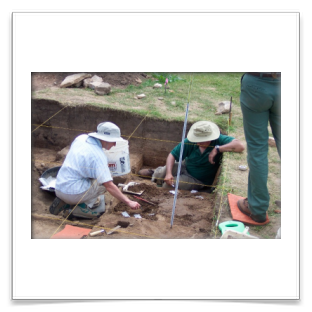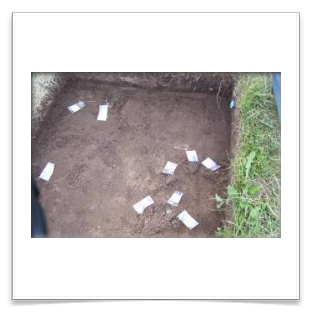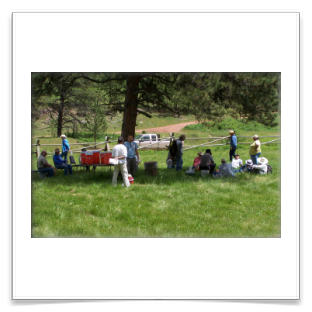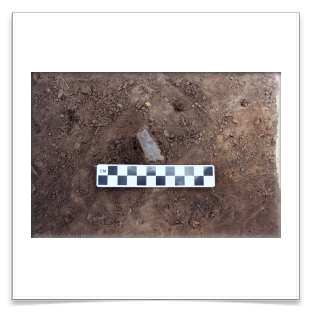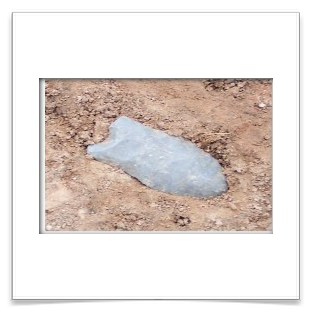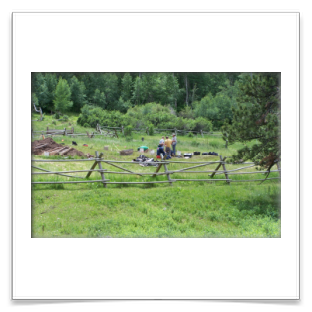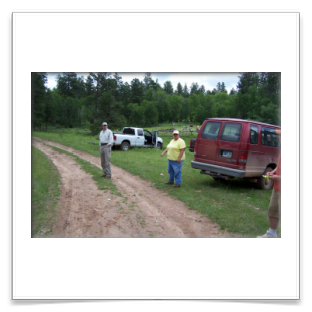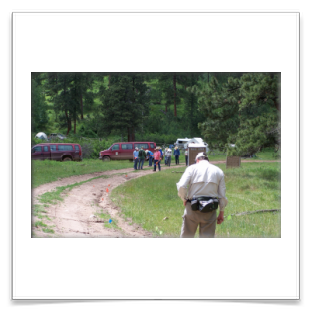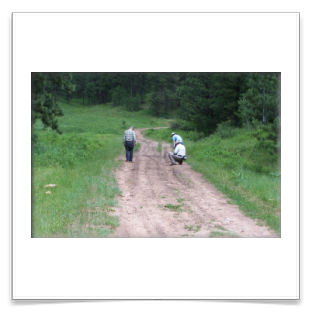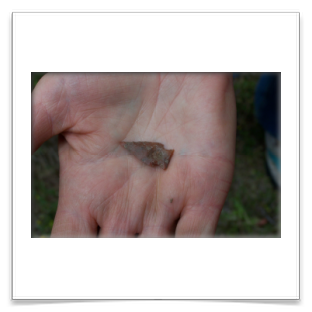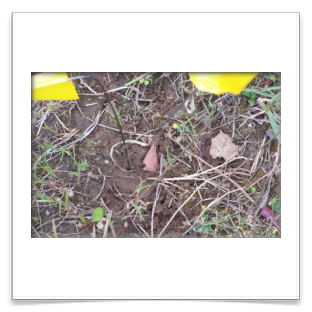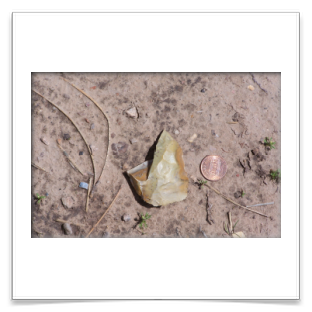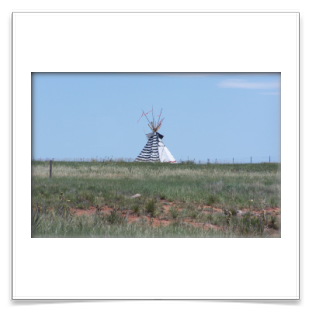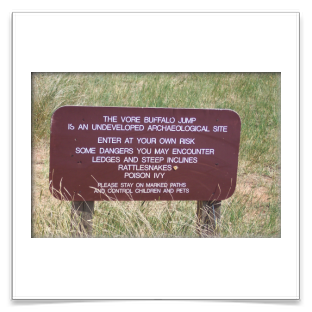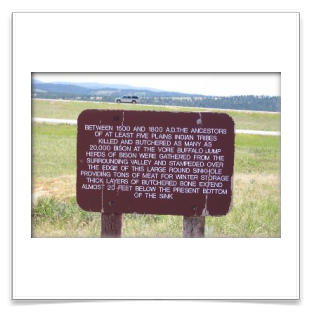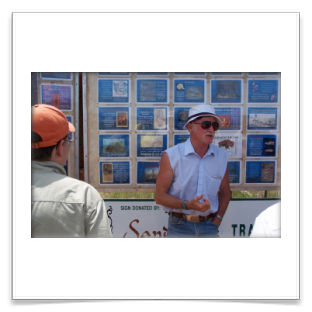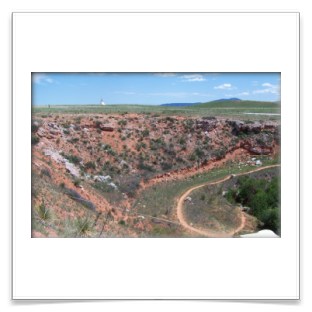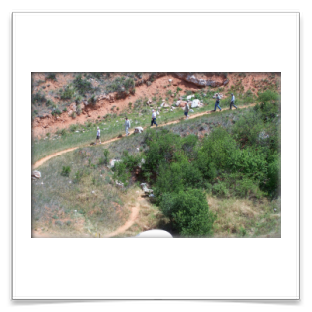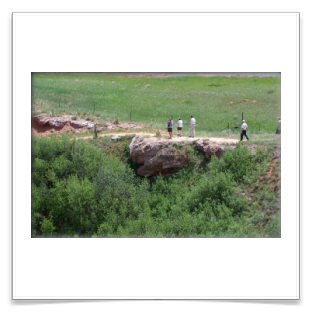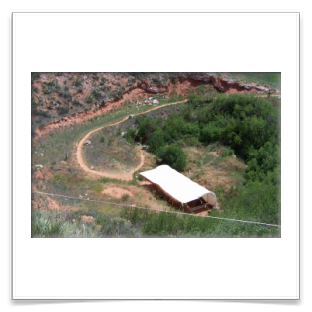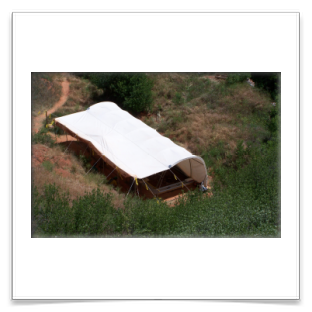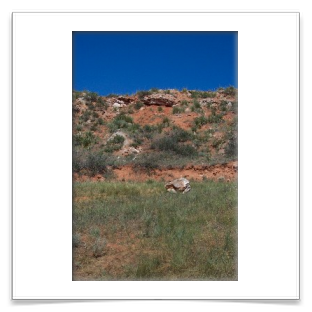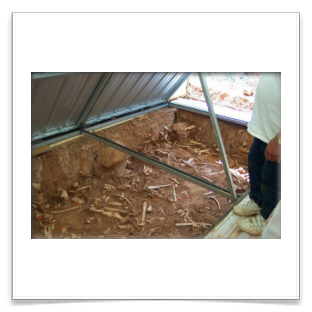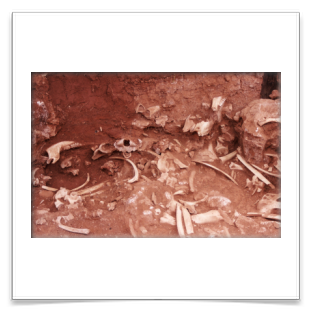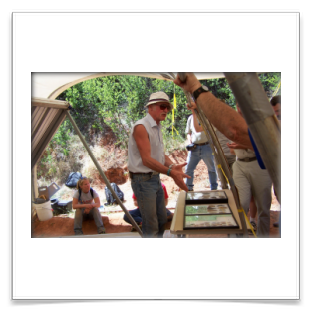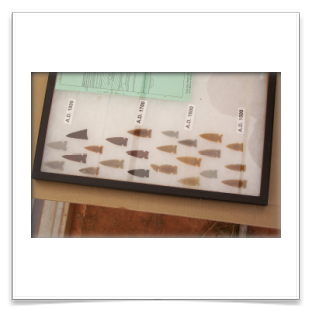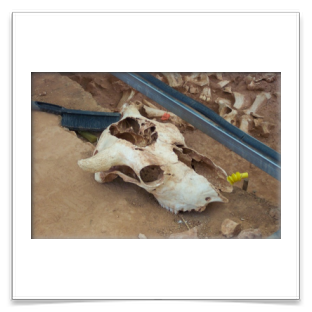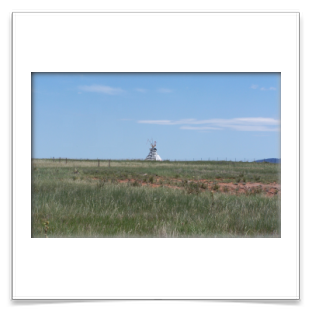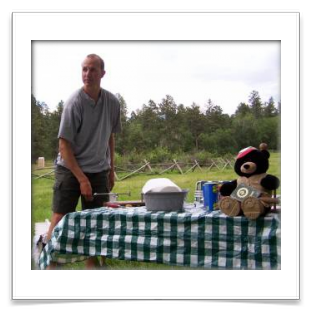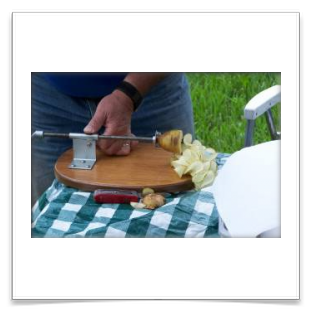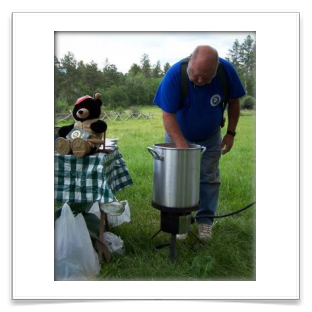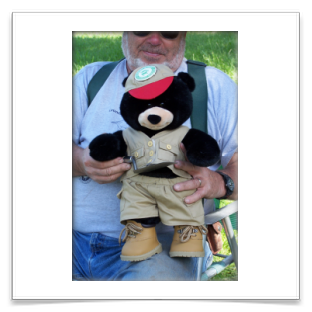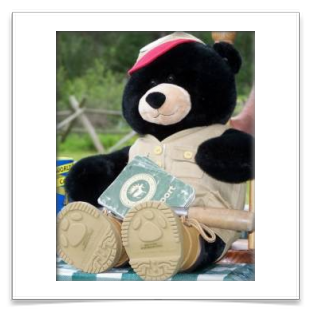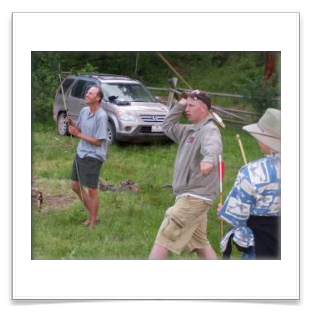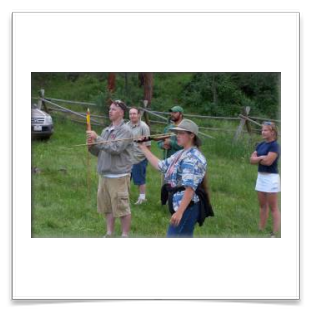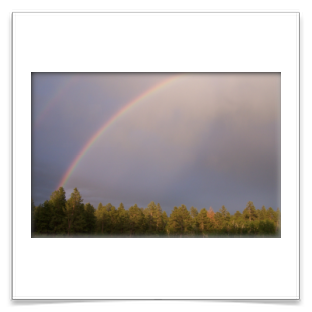Williams Spring - Passport in Time
Main menu:
Previous Projects > States S-W
Williams Spring PIT Project
Black Hills National Forest, Wyoming, 2004-2006
by Grant Sulham, PIT Volunteer
Williams Spring Project was a multiple year (2004-2006) PIT dig in Wyoming. It was conducted in the Black Hills National Forest with the University of Wyoming.
The site is within 20 miles of the Vore Buffalo Jump. Spearfish, South Dakota is the closest city. The plains along I-90 quickly change to thickly wooded hills with steep slopes. The Black Hills are described as “an island on the plains.” As climate has changed, the plants and animals have migrated up and down the slopes of the hills. This was readily seen during the drive. Access is difficult due to the long drive on poor, often muddy roads. You had a choice of two roads to reach the site. One, when wet, was a muddy slide down a hill. The other was a step grade up and had frequent washouts.
The site is a meadow in a small valley surrounded by woods. Very pretty but it seemed to trap the heat of the day. It is also used for cattle grazing and mitigations had been taken to minimize the impact of the cattle. We frequently had a herd of cattle come through the area and the lease of the grazing argued “My cattle were here before your site.” (We just nodded.) The spring provides ample year round water. During excavations, surface finds, and test pits it became clear that the site covered a large area.
The University of Wyoming had developed software that would build a 3-dimesional mapping of the site. It was fortunate that a retired surveyor was one of the PIT volunteers as multiple measurements were required of each artifact. As an example, a projectile point would be recorded as dorsal or ventral, length, width, direction, dip, etc. The university also conducted a field school under the leadership of Dr. Charles Reher. The PIT volunteers worked alongside the students. The volunteers noted that while the students had the education, the PIT volunteers had the experience. The students had as part of their final exam to complete a 1 meter square, 10 centimeters deep and have the floor be no more than 1 centimeter off. We did point out to one student that kneeling in the pit made holes.
The occupation layer was thin. While it covered several hundred years, rodent activity and the ever present cattle hooves, appear to have disturbed and compressed the layer. One thing that was impressive was the cooperation between the archeologist and the various tribes. There were 16 memorandums of understanding between the NFS and the tribes, clans and groups. Care was taken to avoid any sacred sites. Before the Williams Spring excavations there was discussion as to the location, timing and what areas would be avoided. Various tribal elders visited each project and a number of tribal youth groups also toured the project.
We conducted a road survey. There was a little used road to the north of the site. After a day of rain we walked the road finding debitage and a number of points. It showed that the site was extensive as well a providing excellent training in survey work.
Artifacts were mostly of a gray-white cryptocrystalline (CCS) material. Try saying “cryptocrystalline” after a long day and a couple of beers. One notable find was a piece of Knife River Flint. This is a rare rock that looks much like translucent brown taffy. It is only found in North Dakota and had to have traveled several hundred miles to reach the site. We found one hearth but no bones, or pottery. Unlike some other digs the soil was soft and projectile points were common. We decided to begin the excavation earlier on the morning as by mid-afternoon; it was too hot to work. For a number of reason a one meter test pit was dug NE of the main excavation and at the edge of the road. It produced a large number of artifacts as well as a large hammer stone. Yes, people would drift over and offer to “help.”
We had a field trip to the Vore Buffalo Jump. This is in Sundance WY, just off I-90, and right next to the South Dakota state line. The jump is a sinkhole measuring 200 feet in diameter and 40 feet deep. It was used between 1500-1800 CE. When excavated in the 1970s bones were found to be 15 feet thick. Buffalo were herded over a period of days, and then stampeded. While they can quickly stop, the leaders were pushed into the pit by the rest of the herd. Sediment examination showed that several years would pass between uses. This appears to be due to the number of animals killed in each jump. The drives were typically in the fall when the hides were at their best. The drive lines have been surveyed and track how the herd was moved towards the jump and then stampeded. The arrangement of the bones show that a large number of people worked to process the kill. Dr. Reher remarked that the campsite for the hunters hasn’t been found. It is suspected to be along a stream but erosion has likely removed any trace. Given the fall hunt schedule, bands were under pressure to process the meat and then travel to their winter encampments before snow came. I've travelled through the area in winter. There wasn’t a lot of snow but there was a cutting cold.
Vore is an interesting place but watch for snakes and pace yourself on hot days.
Traditionally, the end of the dig saw a cookout. One of our volunteers brought the materials to have deep fried potato chips. He used an apple peeler to created long strings and then deep fried them. It was a wonderful treat at the end of the day when the cool breezes start. Last we had “Dig Bear” attend. He had his own PIT Passport and planned to travel to many more projects.
